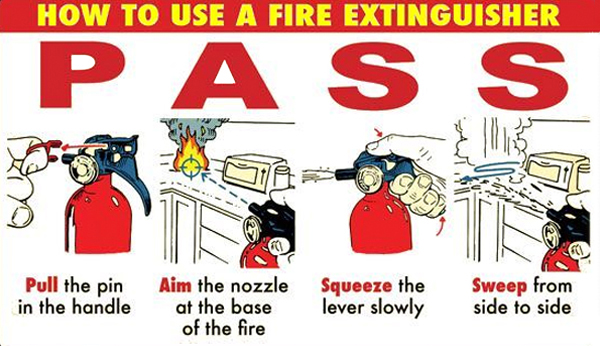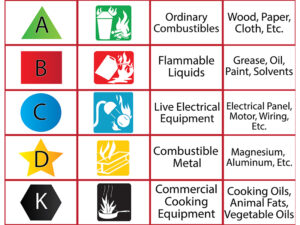Employees Asked to Read About, Watch Video on Fire Safety and Prevention
The Offices of Environmental Health and Safety (EHS) and Facilities Management typically hold evacuation drills during the fall and spring semesters. Because of the COVID-19 pandemic, however, evacuation drills will not be held until further notice.

In lieu of these drills, and to continue to educate Duquesne students and employees, EHS has prepared the following information. Please read the information below and then watch the video on fire extinguisher use.
Fire safety is the responsibility of all members of the University community.
Fire Safety Preparedness and Prevention Components:
- Evacuation Drills: Participate in all evacuation drills when they resume. Drills allow building occupants and floor marshals to practice exiting within allocated times, Facilities Management to check that strobes and horns are working, and EHS to observe building occupant response times and other related matters. When a building alarm sounds, exit and proceed to your building’s designated gathering location. For more information, visit the Emergency Evacuation Guidelines on the EHS website.
- Exits Routes: Always know the location of the two exits closest to you. Exit routes are illustrated on evacuation maps, and exit signs are located above stairwell doors. Never block an exit route, and remove any obstacles or items that may obstruct this route.
- Fire Alarm Components: Never block access to pull stations, sprinkler heads, smoke detectors, strobes, horns, fire hoses and other fire alarm components.
- Fire Alarm Pull Station: Fire alarm pull stations activate building alarms and automatically alert public safety and the local fire department. Learn and remember the location of the nearest fire alarm pull station. They are typically near stairwell doors.
- Fire Doors: Never prop open fire doors. Fire doors are designed specifically to stop the spread of fires.
- Fire Extinguishers: Know the location of the nearest fire extinguisher and how to use it. Follow the PASS (Pull, Aim, Squeeze, Sweep) method for use of fire extinguishers. More information is included below. Following the COVID-19 Pandemic, EHS will resume hands-on fire-extinguisher training each year for the campus community.
- Electrical outlets: Do not overload outlets or daisy chain extension cords.
- Stairwells: Always use the nearest stairwell to exit. Never use the elevator during evacuation drills or a fire event. Remember that combustible materials should not be stored in stairwells.
- Storage: Keep general storage to a minimum. Never block exits and doorways. Electric panels must have 3-foot clearance. Higher storage must be maintained at 2-feet below the ceiling.

Additional Resources
There are several regulations that govern fire safety, including the Occupational Safety and Health Administration (OSHA) and the National Fire Protection Association (NFPA).
- National Fire Protection Association
- Occupational Safety and Health Administration – Fire Safety
- The NFPA Safety Tip Sheets relating to Fire Safety
- OSHA Fact Sheet – Fire Safety in the Workplace
For more information, contact Paula Sweitzer, director of EHS, at 412.396.4763.
